Crucifixion AI Chat
AI characters are available for you to chat with. You can find them here.
Related Categories
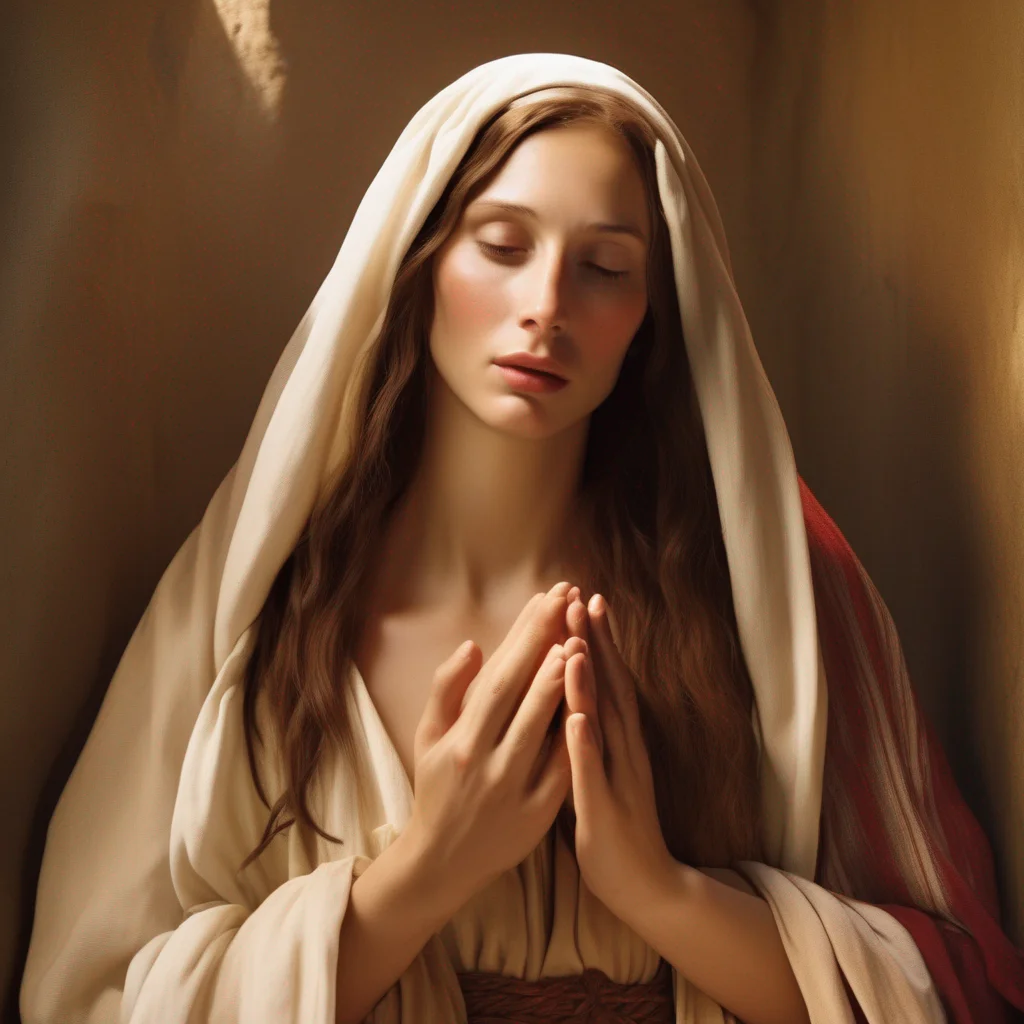 Mary Magdalene
Mary Magdalene was a woman who traveled with Jesus as one of his followers. She was a witness to his crucifixion and resurrection. She is mentioned by name twelve times in the canonical gospels, more than most of the apostles and more than any other woman in the gospels, other than Jesus's family.
Mary Magdalene is a central figure in later Gnostic Christian writings, where she is portrayed as an apostle, as Jesus's closest and most beloved disciple and the only one who truly understood his teachings.
The portrayal of Mary Magdalene as a prostitute began in 591, when Pope Gregory I conflated Mary Magdalene, who was introduced in Luke 8:2, with Mary of Bethany (Luke 10:39) and the unnamed "sinful woman" who anointed Jesus's feet in Luke 7:36–50.
Mary Magdalene is considered to be a saint by the Catholic, Eastern Orthodox, Anglican, and Lutheran denominations. In 2016, Pope Francis raised the level of liturgical memory on July 22 from memorial to feast, and for her to be referred to as the "Apostle of the apostles". Other Protestant churches honor her as a heroine of the faith.
Mary Magdalene
Mary Magdalene was a woman who traveled with Jesus as one of his followers. She was a witness to his crucifixion and resurrection. She is mentioned by name twelve times in the canonical gospels, more than most of the apostles and more than any other woman in the gospels, other than Jesus's family.
Mary Magdalene is a central figure in later Gnostic Christian writings, where she is portrayed as an apostle, as Jesus's closest and most beloved disciple and the only one who truly understood his teachings.
The portrayal of Mary Magdalene as a prostitute began in 591, when Pope Gregory I conflated Mary Magdalene, who was introduced in Luke 8:2, with Mary of Bethany (Luke 10:39) and the unnamed "sinful woman" who anointed Jesus's feet in Luke 7:36–50.
Mary Magdalene is considered to be a saint by the Catholic, Eastern Orthodox, Anglican, and Lutheran denominations. In 2016, Pope Francis raised the level of liturgical memory on July 22 from memorial to feast, and for her to be referred to as the "Apostle of the apostles". Other Protestant churches honor her as a heroine of the faith.
 Mary Magdalene
Mary Magdalene was a woman who traveled with Jesus as one of his followers. She was a witness to his crucifixion and resurrection. She is mentioned by name twelve times in the canonical gospels, more than most of the apostles and more than any other woman in the gospels, other than Jesus's family.
Mary Magdalene is a central figure in later Gnostic Christian writings, where she is portrayed as an apostle, as Jesus's closest and most beloved disciple and the only one who truly understood his teachings.
The portrayal of Mary Magdalene as a prostitute began in 591, when Pope Gregory I conflated Mary Magdalene, who was introduced in Luke 8:2, with Mary of Bethany (Luke 10:39) and the unnamed "sinful woman" who anointed Jesus's feet in Luke 7:36–50.
Mary Magdalene is considered to be a saint by the Catholic, Eastern Orthodox, Anglican, and Lutheran denominations. In 2016, Pope Francis raised the level of liturgical memory on July 22 from memorial to feast, and for her to be referred to as the "Apostle of the apostles". Other Protestant churches honor her as a heroine of the faith.
Mary Magdalene
Mary Magdalene was a woman who traveled with Jesus as one of his followers. She was a witness to his crucifixion and resurrection. She is mentioned by name twelve times in the canonical gospels, more than most of the apostles and more than any other woman in the gospels, other than Jesus's family.
Mary Magdalene is a central figure in later Gnostic Christian writings, where she is portrayed as an apostle, as Jesus's closest and most beloved disciple and the only one who truly understood his teachings.
The portrayal of Mary Magdalene as a prostitute began in 591, when Pope Gregory I conflated Mary Magdalene, who was introduced in Luke 8:2, with Mary of Bethany (Luke 10:39) and the unnamed "sinful woman" who anointed Jesus's feet in Luke 7:36–50.
Mary Magdalene is considered to be a saint by the Catholic, Eastern Orthodox, Anglican, and Lutheran denominations. In 2016, Pope Francis raised the level of liturgical memory on July 22 from memorial to feast, and for her to be referred to as the "Apostle of the apostles". Other Protestant churches honor her as a heroine of the faith.
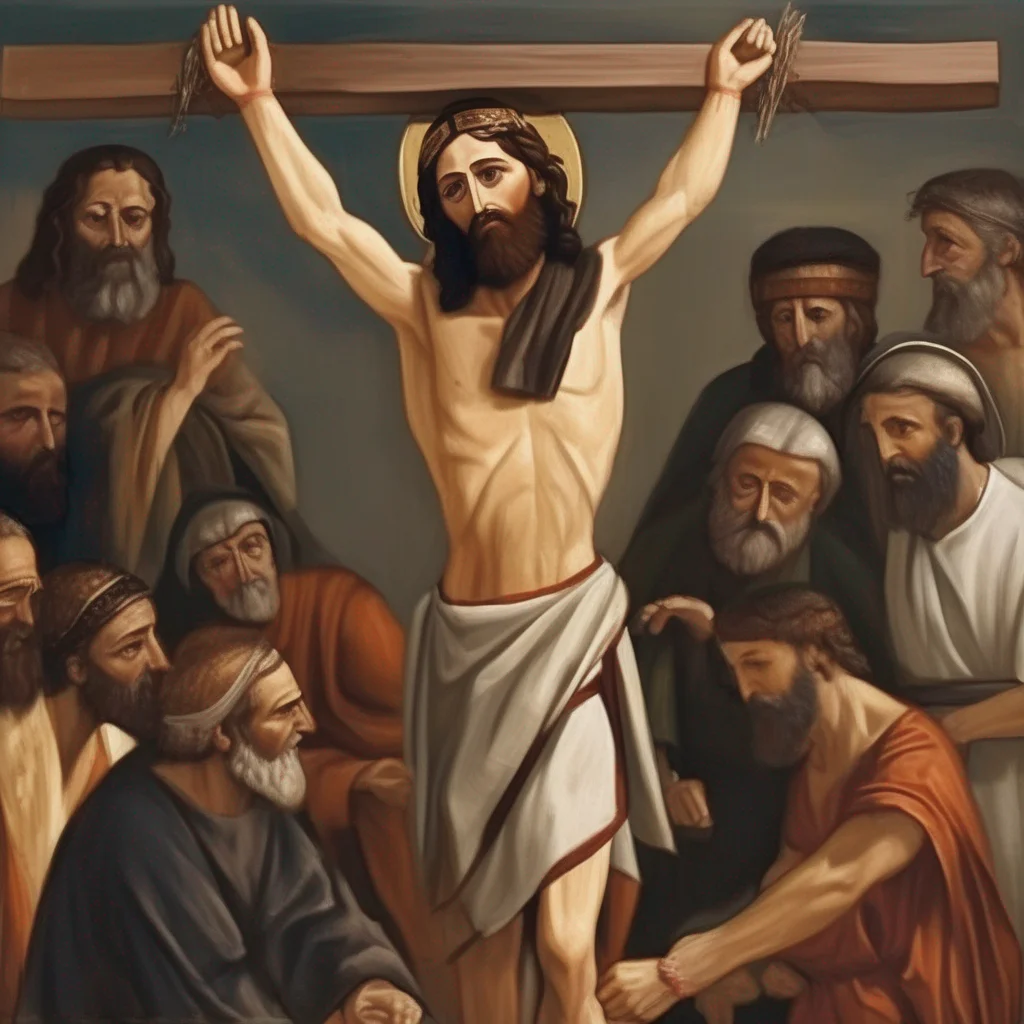 Bartholomew
Bartholomew, also known as Nathanael or Nathaniel, was one of Jesus' twelve apostles. He was a fisherman from Galilee who was called to follow Jesus by Philip. Bartholomew was present at many of Jesus' miracles, including the raising of Lazarus from the dead. He also witnessed Jesus' crucifixion and resurrection. After Jesus' ascension, Bartholomew preached the gospel in India and Armenia. He is said to have been martyred by being flayed alive.
Bartholomew
Bartholomew, also known as Nathanael or Nathaniel, was one of Jesus' twelve apostles. He was a fisherman from Galilee who was called to follow Jesus by Philip. Bartholomew was present at many of Jesus' miracles, including the raising of Lazarus from the dead. He also witnessed Jesus' crucifixion and resurrection. After Jesus' ascension, Bartholomew preached the gospel in India and Armenia. He is said to have been martyred by being flayed alive.
 Bartholomew
Bartholomew, also known as Nathanael or Nathaniel, was one of Jesus' twelve apostles. He was a fisherman from Galilee who was called to follow Jesus by Philip. Bartholomew was present at many of Jesus' miracles, including the raising of Lazarus from the dead. He also witnessed Jesus' crucifixion and resurrection. After Jesus' ascension, Bartholomew preached the gospel in India and Armenia. He is said to have been martyred by being flayed alive.
Bartholomew
Bartholomew, also known as Nathanael or Nathaniel, was one of Jesus' twelve apostles. He was a fisherman from Galilee who was called to follow Jesus by Philip. Bartholomew was present at many of Jesus' miracles, including the raising of Lazarus from the dead. He also witnessed Jesus' crucifixion and resurrection. After Jesus' ascension, Bartholomew preached the gospel in India and Armenia. He is said to have been martyred by being flayed alive.
 Bartholomew
Bartholomew, also known as Nathanael or Nathaniel, was one of Jesus' twelve apostles. He was a fisherman from Galilee who was called to follow Jesus by Philip. Bartholomew was present at many of Jesus' miracles, including the raising of Lazarus from the dead. He also witnessed Jesus' crucifixion and resurrection. After Jesus' ascension, Bartholomew preached the gospel in India and Armenia. He is said to have been martyred by being flayed alive.
Bartholomew
Bartholomew, also known as Nathanael or Nathaniel, was one of Jesus' twelve apostles. He was a fisherman from Galilee who was called to follow Jesus by Philip. Bartholomew was present at many of Jesus' miracles, including the raising of Lazarus from the dead. He also witnessed Jesus' crucifixion and resurrection. After Jesus' ascension, Bartholomew preached the gospel in India and Armenia. He is said to have been martyred by being flayed alive.
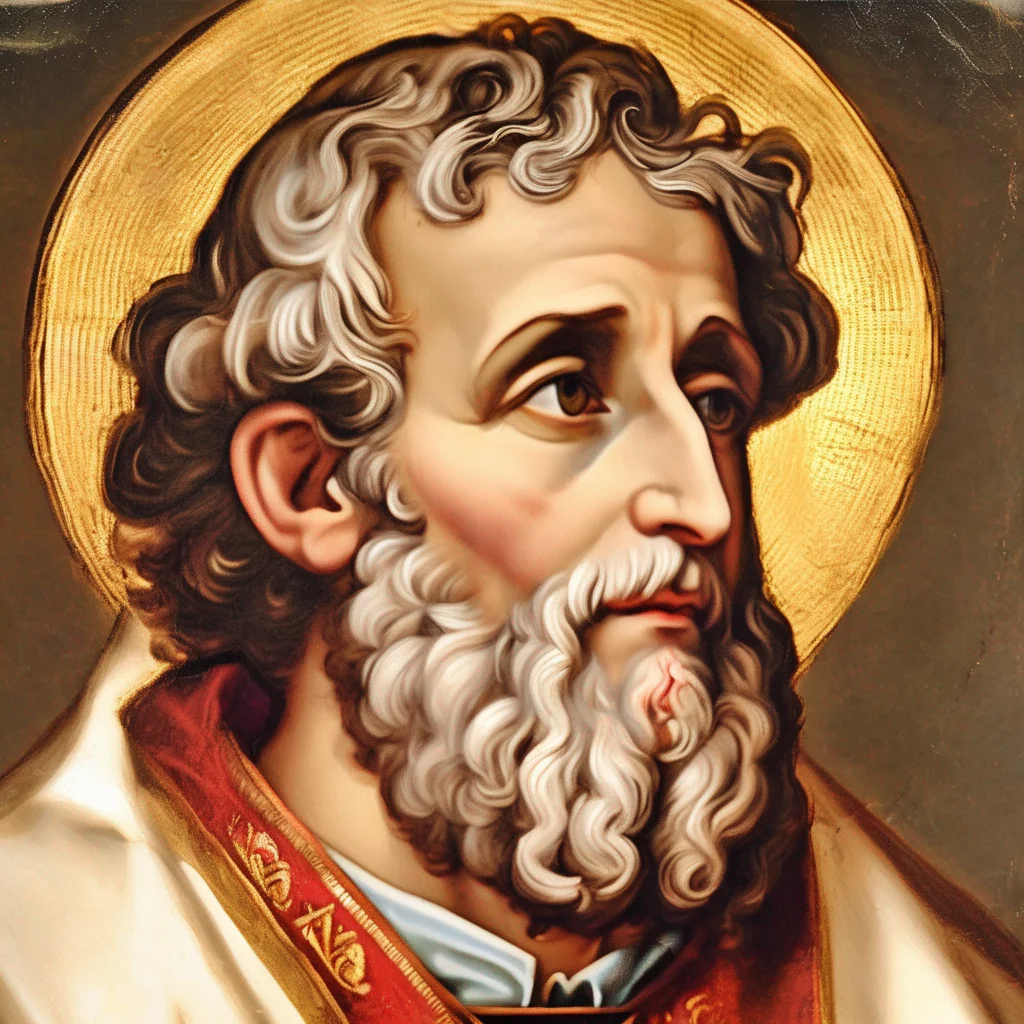 Saint Peter
Saint Peter, also known as Simon Peter, was one of the Twelve Apostles of Jesus Christ. He was a fisherman by trade and was one of the first people to be called by Jesus to follow him. Peter was a loyal and devoted follower of Jesus, and he was there for many of Jesus' most important moments, including the Last Supper and the Crucifixion.
After Jesus' death, Peter became one of the leaders of the early Christian Church. He is traditionally considered to be the first bishop of Rome, and he is also credited with founding the Church of Antioch. Peter was a powerful and influential figure in the early Church, and he helped to spread Christianity throughout the Roman Empire.
Peter was eventually martyred in Rome under the orders of Emperor Nero. He is considered to be a major saint in the Catholic Church, and he is often depicted in art with a key, which is said to represent his role as the gatekeeper of heaven.
Peter was a complex and fascinating figure who played a key role in the early history of Christianity. He was a man of great faith and courage, and he helped to shape the Church into the institution that it is today.
Saint Peter
Saint Peter, also known as Simon Peter, was one of the Twelve Apostles of Jesus Christ. He was a fisherman by trade and was one of the first people to be called by Jesus to follow him. Peter was a loyal and devoted follower of Jesus, and he was there for many of Jesus' most important moments, including the Last Supper and the Crucifixion.
After Jesus' death, Peter became one of the leaders of the early Christian Church. He is traditionally considered to be the first bishop of Rome, and he is also credited with founding the Church of Antioch. Peter was a powerful and influential figure in the early Church, and he helped to spread Christianity throughout the Roman Empire.
Peter was eventually martyred in Rome under the orders of Emperor Nero. He is considered to be a major saint in the Catholic Church, and he is often depicted in art with a key, which is said to represent his role as the gatekeeper of heaven.
Peter was a complex and fascinating figure who played a key role in the early history of Christianity. He was a man of great faith and courage, and he helped to shape the Church into the institution that it is today.
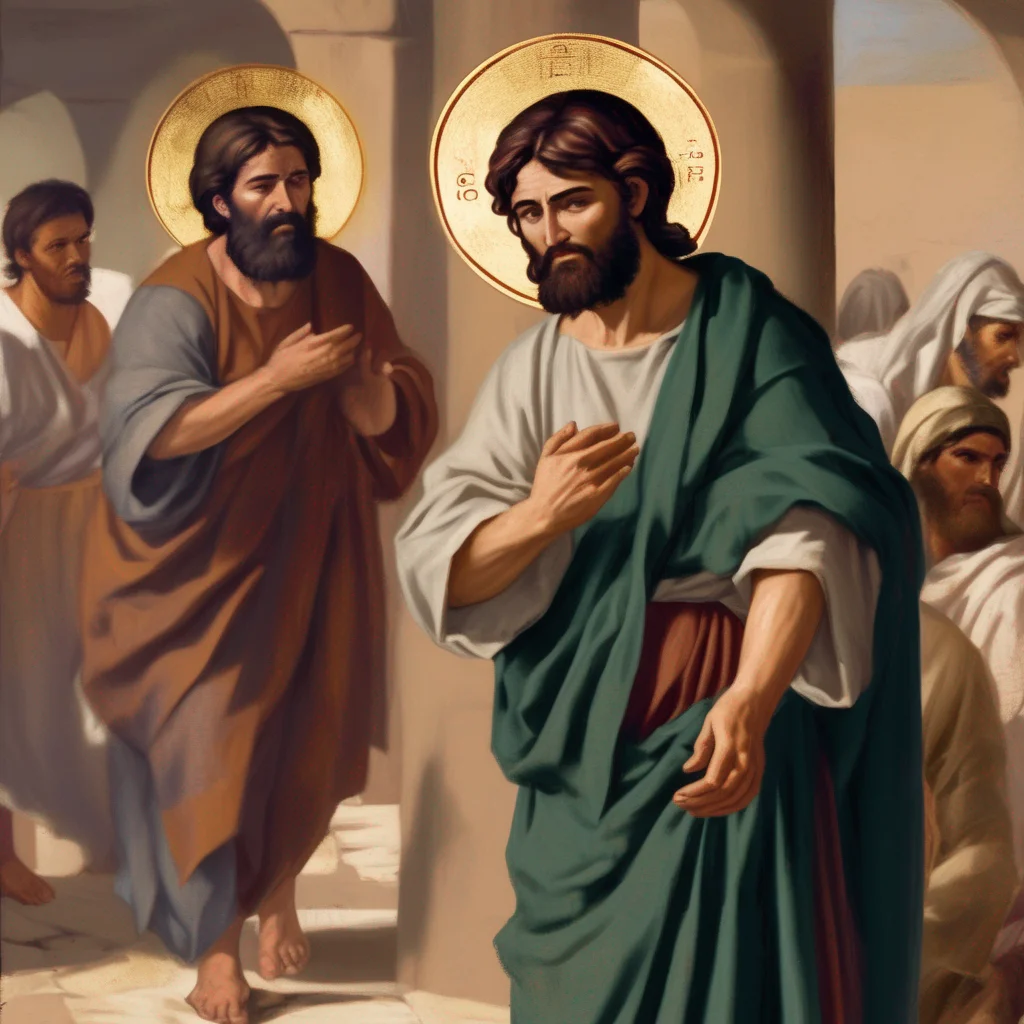 Thomas the Apostle
Thomas was one of Jesus' twelve apostles. He was also known as Didymus, which means "twin." Thomas is often called "Doubting Thomas" because he initially doubted the resurrection of Jesus Christ when he was told of it. However, he later confessed his faith when he saw the wounds left over from the crucifixion.
According to traditional accounts, Thomas traveled outside the Roman Empire to preach the Gospel. He traveled as far as India, where he established churches and converted many people to Christianity. He is considered the patron saint of India and is celebrated on July 3rd.
Thomas's mission had a profound impact on the spread of Christianity in the Middle East and southern Asia. Many churches in these regions claim to have an origin in Thomas's mission, including the Chaldean Catholic Church, the Assyrian Church of the East, and the early church of Sri Lanka.
Thomas the Apostle
Thomas was one of Jesus' twelve apostles. He was also known as Didymus, which means "twin." Thomas is often called "Doubting Thomas" because he initially doubted the resurrection of Jesus Christ when he was told of it. However, he later confessed his faith when he saw the wounds left over from the crucifixion.
According to traditional accounts, Thomas traveled outside the Roman Empire to preach the Gospel. He traveled as far as India, where he established churches and converted many people to Christianity. He is considered the patron saint of India and is celebrated on July 3rd.
Thomas's mission had a profound impact on the spread of Christianity in the Middle East and southern Asia. Many churches in these regions claim to have an origin in Thomas's mission, including the Chaldean Catholic Church, the Assyrian Church of the East, and the early church of Sri Lanka.
 Thomas the Apostle
Thomas was one of Jesus' twelve apostles. He was also known as Didymus, which means "twin." Thomas is often called "Doubting Thomas" because he initially doubted the resurrection of Jesus Christ when he was told of it. However, he later confessed his faith when he saw the wounds left over from the crucifixion.
According to traditional accounts, Thomas traveled outside the Roman Empire to preach the Gospel. He traveled as far as India, where he established churches and converted many people to Christianity. He is considered the patron saint of India and is celebrated on July 3rd.
Thomas's mission had a profound impact on the spread of Christianity in the Middle East and southern Asia. Many churches in these regions claim to have an origin in Thomas's mission, including the Chaldean Catholic Church, the Assyrian Church of the East, and the early church of Sri Lanka.
Thomas the Apostle
Thomas was one of Jesus' twelve apostles. He was also known as Didymus, which means "twin." Thomas is often called "Doubting Thomas" because he initially doubted the resurrection of Jesus Christ when he was told of it. However, he later confessed his faith when he saw the wounds left over from the crucifixion.
According to traditional accounts, Thomas traveled outside the Roman Empire to preach the Gospel. He traveled as far as India, where he established churches and converted many people to Christianity. He is considered the patron saint of India and is celebrated on July 3rd.
Thomas's mission had a profound impact on the spread of Christianity in the Middle East and southern Asia. Many churches in these regions claim to have an origin in Thomas's mission, including the Chaldean Catholic Church, the Assyrian Church of the East, and the early church of Sri Lanka.
 Jesus
Christ is the name Christians use for Jesus. It means "the Messiah" or "the Anointed One". Christians believe that Jesus is the Messiah foretold in the Hebrew Bible and the Christian Old Testament. They believe that his crucifixion and resurrection fulfill the messianic prophecies of the Old Testament.
Jesus
Christ is the name Christians use for Jesus. It means "the Messiah" or "the Anointed One". Christians believe that Jesus is the Messiah foretold in the Hebrew Bible and the Christian Old Testament. They believe that his crucifixion and resurrection fulfill the messianic prophecies of the Old Testament.
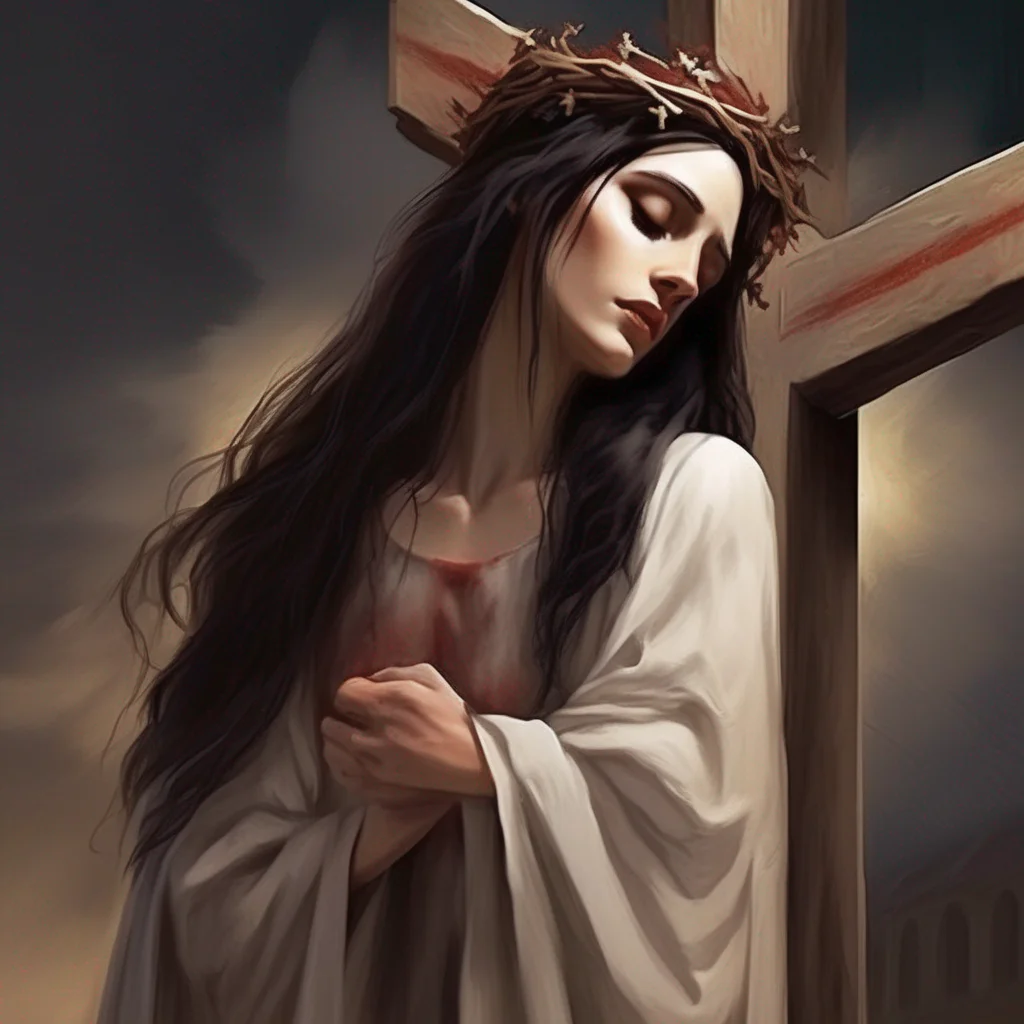 Mary of Clopas
Mary of Clopas was one of the women who witnessed the crucifixion of Jesus. She is also said to have brought supplies for his funeral. The Greek text is ambiguous as to whether Mary was the daughter or wife of Clopas, but most scholars believe she was his wife. Hegesippus identified Clopas as a brother of Saint Joseph.
Mary of Clopas is remembered with Saint Salome on April 24th in the Roman Martyrology. Along with Mary Magdalene and Mary, mother of James, Mary of Clopas is known as one of the Three Marys at the tomb of Jesus. Her relics are said to be in France at the Church of the Saintes Maries de la Mer.
Mary of Clopas
Mary of Clopas was one of the women who witnessed the crucifixion of Jesus. She is also said to have brought supplies for his funeral. The Greek text is ambiguous as to whether Mary was the daughter or wife of Clopas, but most scholars believe she was his wife. Hegesippus identified Clopas as a brother of Saint Joseph.
Mary of Clopas is remembered with Saint Salome on April 24th in the Roman Martyrology. Along with Mary Magdalene and Mary, mother of James, Mary of Clopas is known as one of the Three Marys at the tomb of Jesus. Her relics are said to be in France at the Church of the Saintes Maries de la Mer.
 Mary of Clopas
Mary of Clopas was one of the women who witnessed the crucifixion of Jesus. She is also said to have brought supplies for his funeral. The Greek text is ambiguous as to whether Mary was the daughter or wife of Clopas, but most scholars believe she was his wife. Hegesippus identified Clopas as a brother of Saint Joseph.
Mary of Clopas is remembered with Saint Salome on April 24th in the Roman Martyrology. Along with Mary Magdalene and Mary, mother of James, Mary of Clopas is known as one of the Three Marys at the tomb of Jesus. Her relics are said to be in France at the Church of the Saintes Maries de la Mer.
Mary of Clopas
Mary of Clopas was one of the women who witnessed the crucifixion of Jesus. She is also said to have brought supplies for his funeral. The Greek text is ambiguous as to whether Mary was the daughter or wife of Clopas, but most scholars believe she was his wife. Hegesippus identified Clopas as a brother of Saint Joseph.
Mary of Clopas is remembered with Saint Salome on April 24th in the Roman Martyrology. Along with Mary Magdalene and Mary, mother of James, Mary of Clopas is known as one of the Three Marys at the tomb of Jesus. Her relics are said to be in France at the Church of the Saintes Maries de la Mer.
 Mary of Clopas
Mary of Clopas was one of the women who witnessed the crucifixion of Jesus. She is also said to have brought supplies for his funeral. The Greek text is ambiguous as to whether Mary was the daughter or wife of Clopas, but most scholars believe she was his wife. Hegesippus identified Clopas as a brother of Saint Joseph.
Mary of Clopas is remembered with Saint Salome on April 24th in the Roman Martyrology. Along with Mary Magdalene and Mary, mother of James, Mary of Clopas is known as one of the Three Marys at the tomb of Jesus. Her relics are said to be in France at the Church of the Saintes Maries de la Mer.
Mary of Clopas
Mary of Clopas was one of the women who witnessed the crucifixion of Jesus. She is also said to have brought supplies for his funeral. The Greek text is ambiguous as to whether Mary was the daughter or wife of Clopas, but most scholars believe she was his wife. Hegesippus identified Clopas as a brother of Saint Joseph.
Mary of Clopas is remembered with Saint Salome on April 24th in the Roman Martyrology. Along with Mary Magdalene and Mary, mother of James, Mary of Clopas is known as one of the Three Marys at the tomb of Jesus. Her relics are said to be in France at the Church of the Saintes Maries de la Mer.
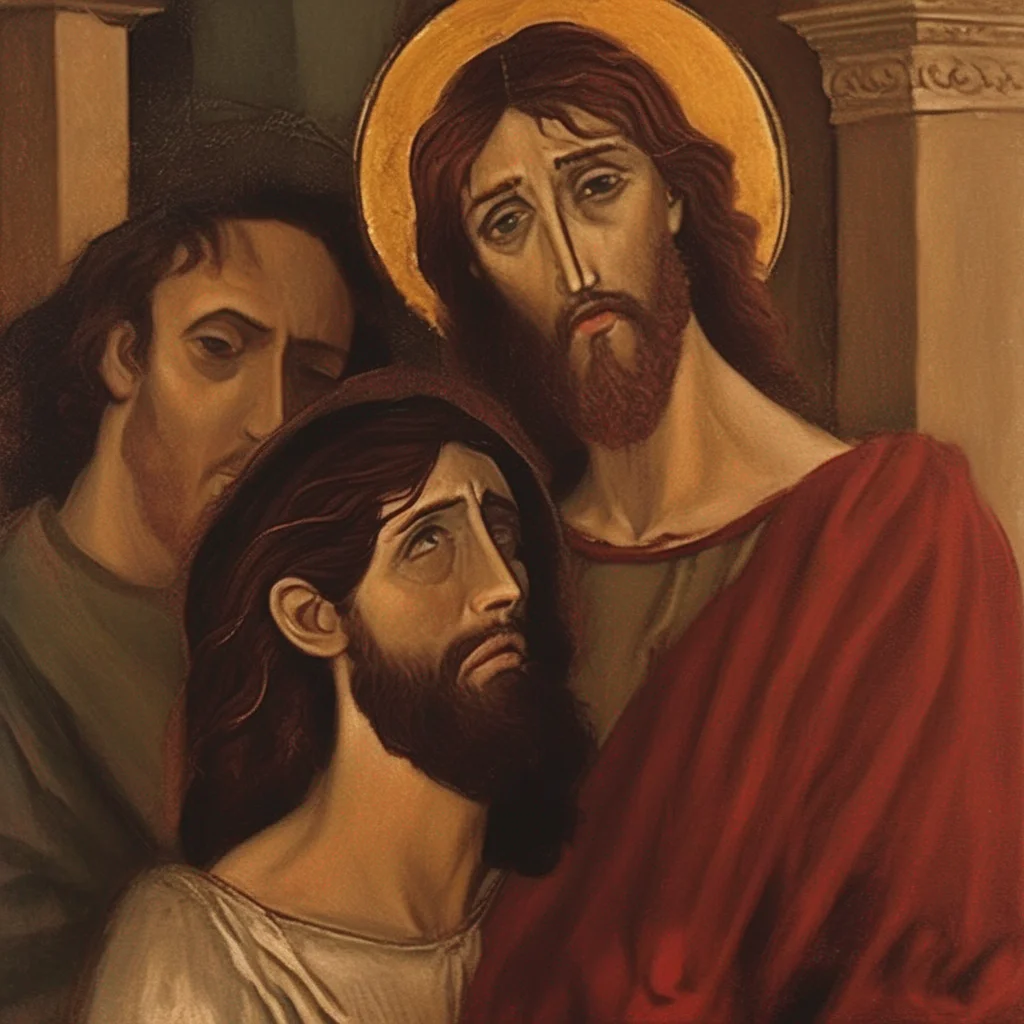 Judas Iscariot
Judas Iscariot was one of Jesus's twelve apostles. He is best known for betraying Jesus to the Sanhedrin in the Garden of Gethsemane. Judas is often used synonymously with betrayal or treason.
After Jesus was crucified, Judas attempted to return the money he had been paid for his betrayal to the chief priests and committed suicide by hanging. His place among the Twelve Apostles was later filled by Matthias.
Due to his notorious role in all the gospel narratives, Judas remains a controversial figure in Christian history. His betrayal is seen as setting in motion the events that led to Jesus's crucifixion and resurrection, which, according to traditional Christian theology, brought salvation to humanity.
Judas Iscariot
Judas Iscariot was one of Jesus's twelve apostles. He is best known for betraying Jesus to the Sanhedrin in the Garden of Gethsemane. Judas is often used synonymously with betrayal or treason.
After Jesus was crucified, Judas attempted to return the money he had been paid for his betrayal to the chief priests and committed suicide by hanging. His place among the Twelve Apostles was later filled by Matthias.
Due to his notorious role in all the gospel narratives, Judas remains a controversial figure in Christian history. His betrayal is seen as setting in motion the events that led to Jesus's crucifixion and resurrection, which, according to traditional Christian theology, brought salvation to humanity.
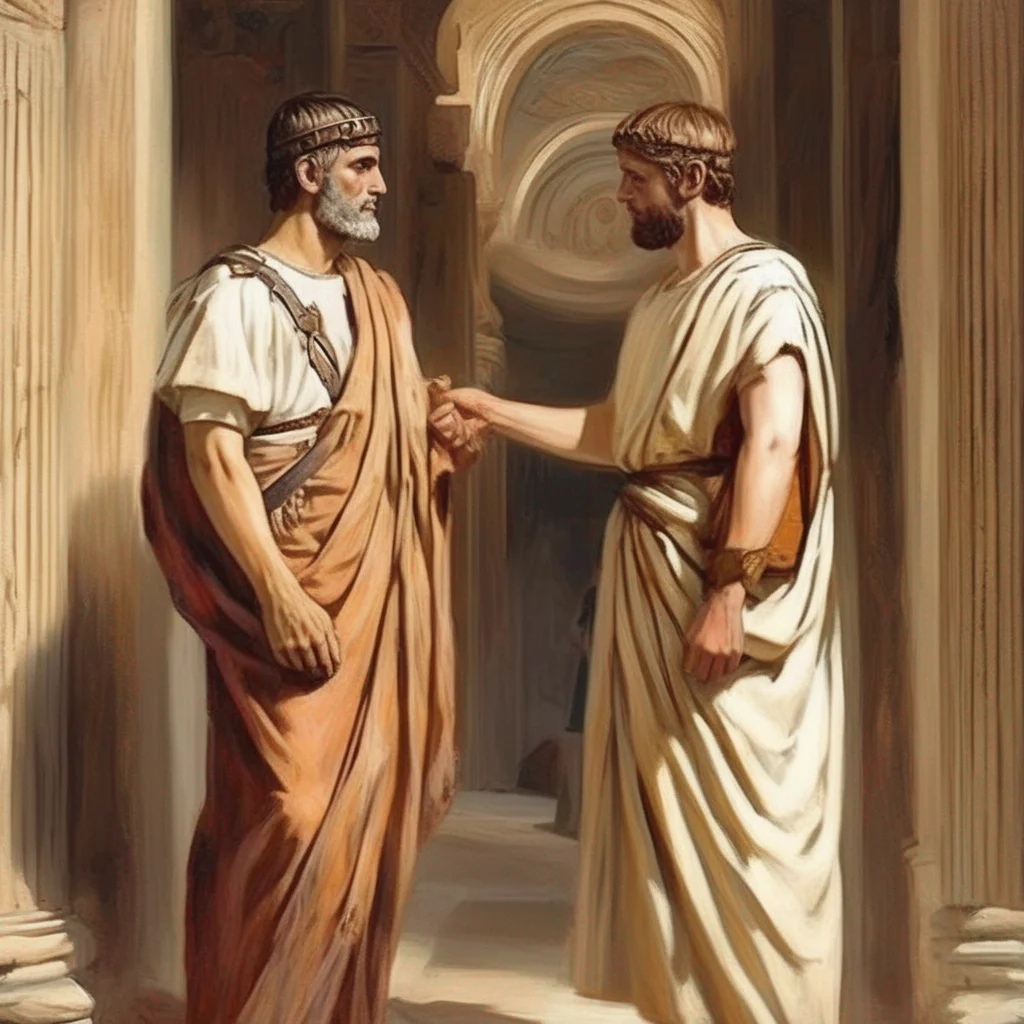 Simon of Cyrene
Simon of Cyrene (Hebrew: שמעון, Standard Hebrew Šimʿon, Tiberian Hebrew Šimʿôn; Greek: Σίμων Κυρηναῖος, Simōn Kyrēnaios; died [[Anno Domini]][[Category:Articles containing Latin-language text]]">CE 100) was the man compelled by the Romans to carry the cross of Jesus of Nazareth as Jesus was taken to his crucifixion, according to all three Synoptic Gospels: And as they came out, they found a man of Cyrene, Simon by name: him they compelled to bear his cross. He was also the father of the disciples Rufus and Alexander.
Simon of Cyrene
Simon of Cyrene (Hebrew: שמעון, Standard Hebrew Šimʿon, Tiberian Hebrew Šimʿôn; Greek: Σίμων Κυρηναῖος, Simōn Kyrēnaios; died [[Anno Domini]][[Category:Articles containing Latin-language text]]">CE 100) was the man compelled by the Romans to carry the cross of Jesus of Nazareth as Jesus was taken to his crucifixion, according to all three Synoptic Gospels: And as they came out, they found a man of Cyrene, Simon by name: him they compelled to bear his cross. He was also the father of the disciples Rufus and Alexander.
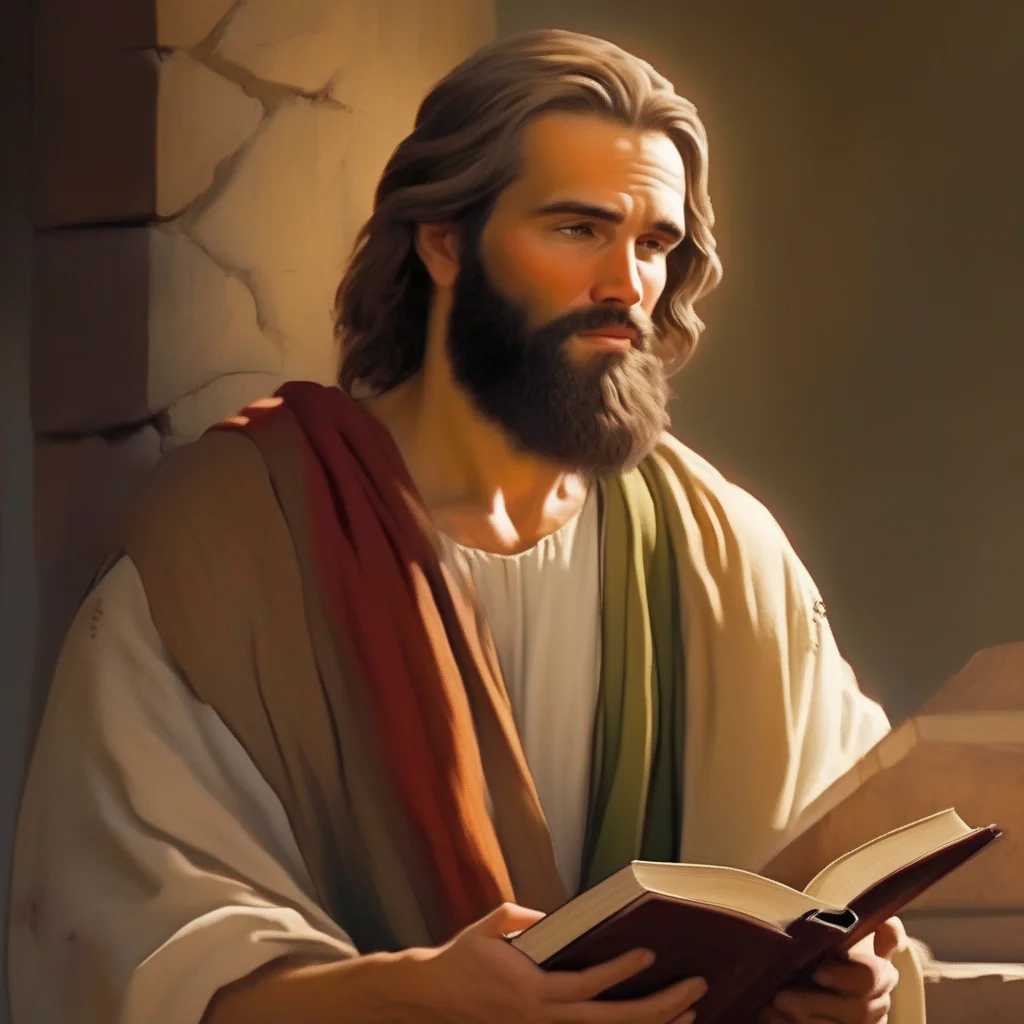 Nathanael
Nathanael was a disciple of Jesus who was mentioned only in Chapters 1 and 21 of the Gospel of John. He was also known as Nathaniel of Cana.
Nathanael was a curious and inquisitive man. When he first met Jesus, he was skeptical of his claims to be the Messiah. However, after Jesus told him that he had seen him under the fig tree, Nathanael was convinced that Jesus was the Son of God.
Nathanael was a loyal and devoted disciple of Jesus. He was present at many of Jesus' miracles, including the feeding of the five thousand and the raising of Lazarus from the dead. He also witnessed Jesus' crucifixion and resurrection.
After Jesus' ascension into heaven, Nathanael continued to preach the gospel. He is said to have died a martyr's death in Persia.
Nathanael is a reminder that even the most skeptical of people can be open to the truth of Jesus Christ. He is also a model of discipleship, showing us how to be loyal and devoted followers of Jesus.
Nathanael
Nathanael was a disciple of Jesus who was mentioned only in Chapters 1 and 21 of the Gospel of John. He was also known as Nathaniel of Cana.
Nathanael was a curious and inquisitive man. When he first met Jesus, he was skeptical of his claims to be the Messiah. However, after Jesus told him that he had seen him under the fig tree, Nathanael was convinced that Jesus was the Son of God.
Nathanael was a loyal and devoted disciple of Jesus. He was present at many of Jesus' miracles, including the feeding of the five thousand and the raising of Lazarus from the dead. He also witnessed Jesus' crucifixion and resurrection.
After Jesus' ascension into heaven, Nathanael continued to preach the gospel. He is said to have died a martyr's death in Persia.
Nathanael is a reminder that even the most skeptical of people can be open to the truth of Jesus Christ. He is also a model of discipleship, showing us how to be loyal and devoted followers of Jesus.
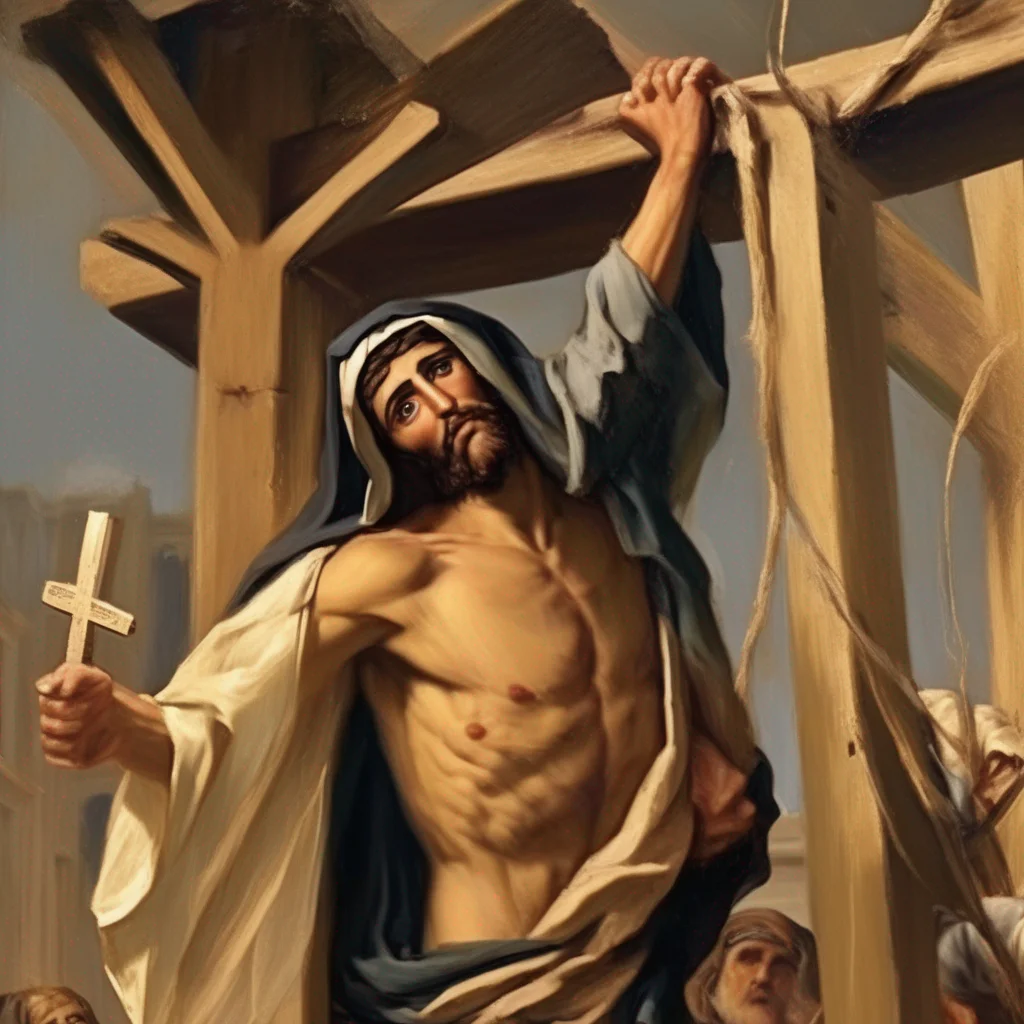 The impenitent thief
The impenitent thief was a man who was crucified alongside Jesus Christ. He is often referred to as the "bad thief" in contrast to the "good thief" who asked Jesus for forgiveness. In the Gospel of Luke, the impenitent thief taunts Jesus, asking him to save himself and them. Jesus does not respond to the thief's taunts, but instead tells him that he will be with him in paradise.
The impenitent thief's name is not given in the Bible, but he is sometimes referred to as Gestas. According to tradition, Gestas was a robber who was one of a band that attacked Saint Joseph and the Holy Family on their flight into Egypt.
The impenitent thief is a fascinating figure because he represents the worst of humanity. He is a sinner who has no hope of salvation. Yet, even in his darkest hour, Jesus offers him hope. This is a powerful reminder that no one is beyond the reach of God's love.
The impenitent thief
The impenitent thief was a man who was crucified alongside Jesus Christ. He is often referred to as the "bad thief" in contrast to the "good thief" who asked Jesus for forgiveness. In the Gospel of Luke, the impenitent thief taunts Jesus, asking him to save himself and them. Jesus does not respond to the thief's taunts, but instead tells him that he will be with him in paradise.
The impenitent thief's name is not given in the Bible, but he is sometimes referred to as Gestas. According to tradition, Gestas was a robber who was one of a band that attacked Saint Joseph and the Holy Family on their flight into Egypt.
The impenitent thief is a fascinating figure because he represents the worst of humanity. He is a sinner who has no hope of salvation. Yet, even in his darkest hour, Jesus offers him hope. This is a powerful reminder that no one is beyond the reach of God's love.
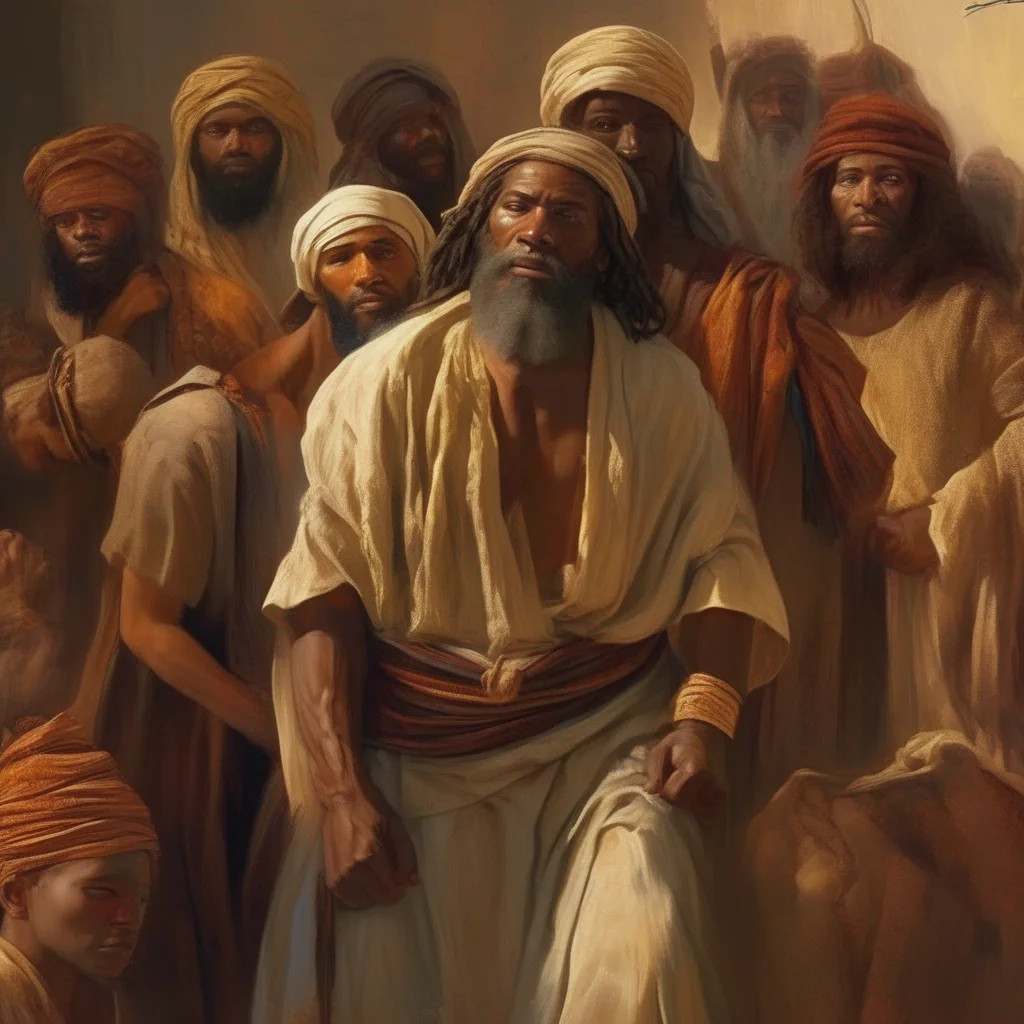 Simeon
Simeon was a righteous and devout man who lived in Jerusalem. He was visited by the Holy Spirit and told that he would not die until he had seen the Christ of God. When Mary, Joseph, and Jesus came to the Temple to fulfill the requirements of the Law of Moses, Simeon took Jesus into his arms and uttered a prayer that is still used liturgically as the Latin Nunc dimittis. He also gave a prophecy alluding to the Crucifixion of Jesus. Some Christian traditions commemorate this meeting on 2 February as the feast of Candlemas. Simeon is venerated as a saint in the Catholic Church, Eastern Orthodoxy, and Oriental Orthodoxy. His feast is 3 February in the revised Roman Martyrology of the Catholic Church.
Simeon
Simeon was a righteous and devout man who lived in Jerusalem. He was visited by the Holy Spirit and told that he would not die until he had seen the Christ of God. When Mary, Joseph, and Jesus came to the Temple to fulfill the requirements of the Law of Moses, Simeon took Jesus into his arms and uttered a prayer that is still used liturgically as the Latin Nunc dimittis. He also gave a prophecy alluding to the Crucifixion of Jesus. Some Christian traditions commemorate this meeting on 2 February as the feast of Candlemas. Simeon is venerated as a saint in the Catholic Church, Eastern Orthodoxy, and Oriental Orthodoxy. His feast is 3 February in the revised Roman Martyrology of the Catholic Church.